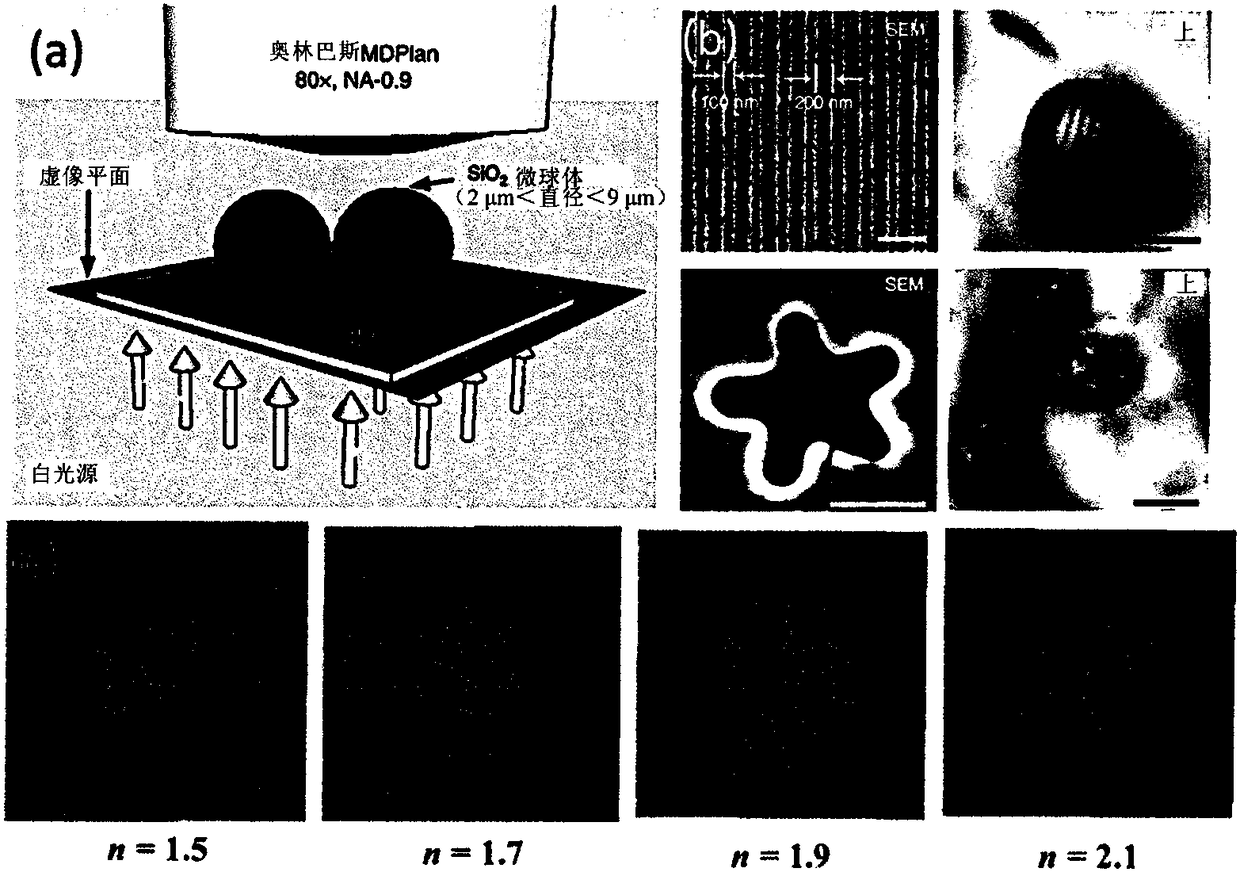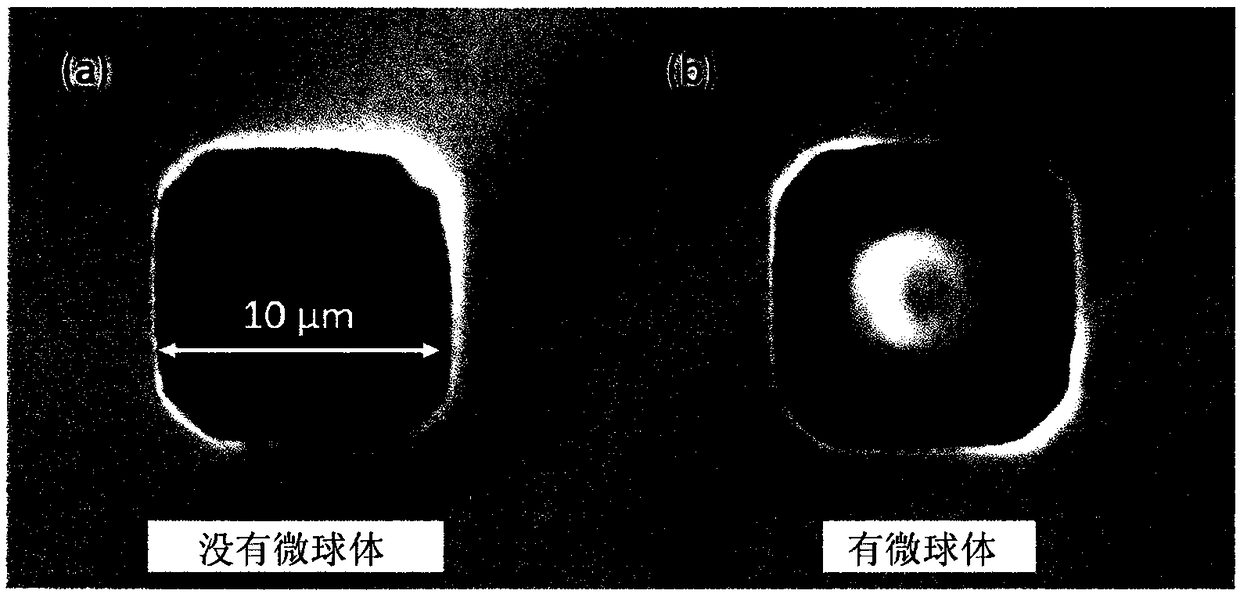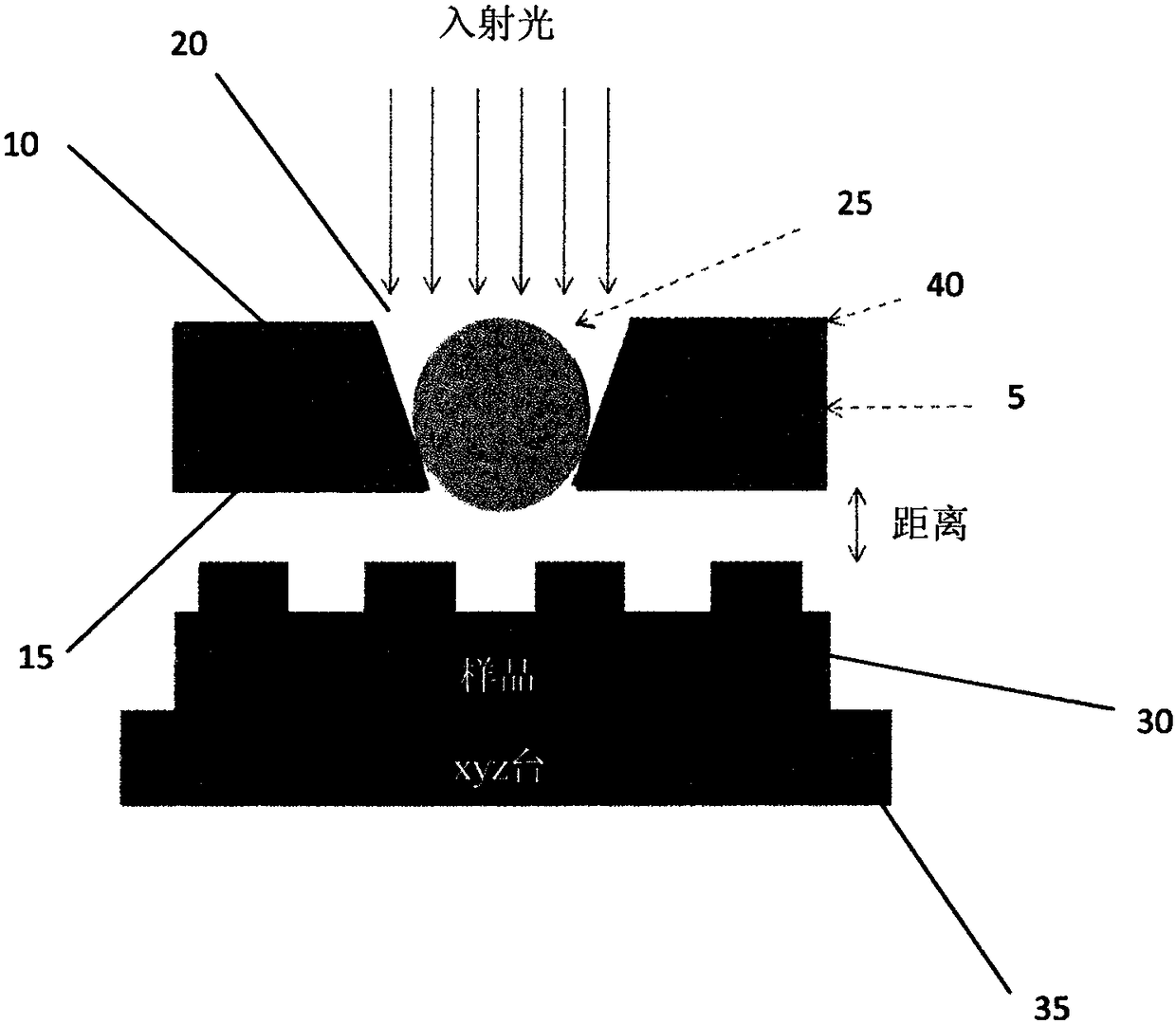Membrane for retaining a microsphere
A technology of microspheres and microscopes, which is applied in the field of new optical nano-imaging solutions, can solve the problems of slow imaging speed and image distortion, and achieve the effect of saving space, low cost and realizing super-resolution
- Summary
- Abstract
- Description
- Claims
- Application Information
AI Technical Summary
Problems solved by technology
Method used
Image
Examples
Embodiment Construction
[0047] According to the present invention, microspherical particle lenses are able to magnify objects into magnified virtual images, which are then captured by conventional microscopes, offering new opportunities to image biomolecules and cracks in materials in real time and in the ambient air.
[0048] The diffraction-limited problem in nanoimaging stems from the loss of evanescent waves in the far field, which carry high-spatial-frequency subwavelength information of objects and decay exponentially with distance. Using microspheres as optical elements for super-resolution imaging, the present invention offers the possibility to recover nanoscale information in the far field. In a suitable device according to the invention, incident light can be trapped inside tiny transparent spheres by bouncing photons around the interior by total internal reflection. In resonance, the enhanced energy is emitted only through a small window. This tendency allows many interesting application...
PUM
 Login to View More
Login to View More Abstract
Description
Claims
Application Information
 Login to View More
Login to View More - R&D
- Intellectual Property
- Life Sciences
- Materials
- Tech Scout
- Unparalleled Data Quality
- Higher Quality Content
- 60% Fewer Hallucinations
Browse by: Latest US Patents, China's latest patents, Technical Efficacy Thesaurus, Application Domain, Technology Topic, Popular Technical Reports.
© 2025 PatSnap. All rights reserved.Legal|Privacy policy|Modern Slavery Act Transparency Statement|Sitemap|About US| Contact US: help@patsnap.com



